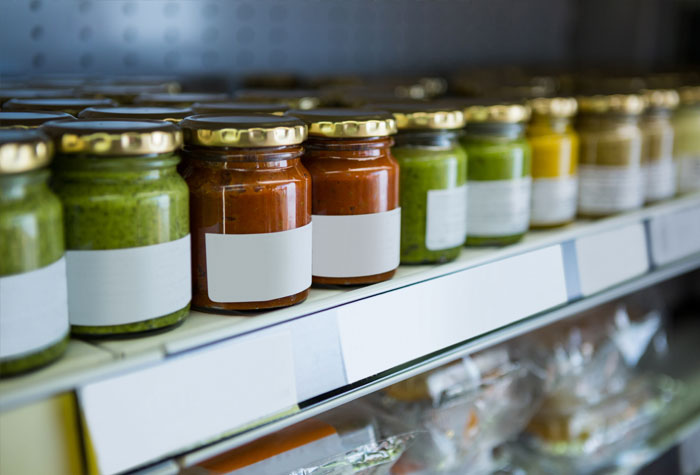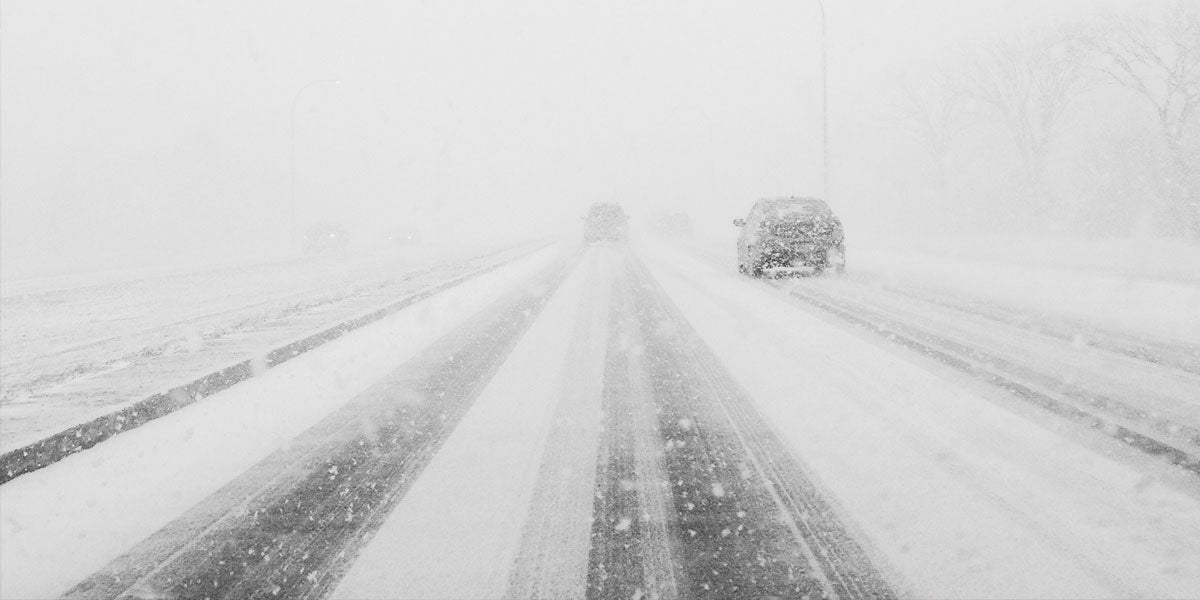Winter Wants to Destroy Your Emergency Supplies!
You’ve invested hundreds of dollars—maybe even thousands—into your emergency supplies. And if the world goes sideways…well, let’s just say you’re going to need them.
It’s scary to think your supplies could all be wiped out by just a few freezing-cold days.
But it’s true. Every winter, prep-minded folk all over the country lose their supplies to the cold. Today we’ll show you once and for all how to stop that from happening.
1. Know Where Your Supply Is Most Vulnerable

Food – For freeze-dried and dehydrated foods, cool temperatures are a good thing. It’s recommended that you store food storage between 50 and 70 degrees Fahrenheit. This will help it achieve its stated shelf life.
Having said that, cold can also be an enemy of stored emergency food. Fluctuations in temperature cause cans to expand and contract, opening seams, letting in oxygen, and leading to spoilage.
Water – Just like with cans, your emergency water containers can easily crack in cold weather. This happens when water freezes and expands, bursting out of its containment and cracking your barrels.
Electronics – Storing spare cell phones? Power bank chargers? Anything that uses batteries?
Then watch out this winter.
Electronics do not like extreme cold. It drains batteries more quickly. It cracks screens and monitors and can cause them to stop working entirely. And any condensation created in the freeze/thaw cycle produces water—the ultimate electronics killer.
Fabric (Sleeping Bags, Blankets, Etc.) – Too many of the prep-minded people we know have gone out after a long winter to discover that their blankets, sleeping bags, packs, etc., have been invaded by rodents.
Rodents get cold (just like humans) and the fabrics in your supply make awfully comfy lodging.
What’s worse, once they’ve gotten into your fabrics, it won’t be long till they find your…food!
2. Insulate Your Space

Now on to solutions…
We’ll start with the most labor-intensive: If your garage or shed isn’t already insulated, correcting that issue can make all the difference in creating a space that’s optimal for long-term emergency storage.
There are two types of insulation we recommend:
Fiberglass Roll – Fiberglass roll insulation is affordable and pretty simple to install in unfinished walls. Just unroll the insulation between studs and staple it every couple feet.
Cellulose – If your garage has finished walls, cellulose insulation will be the most inexpensive option. Be prepared to rent a blowing machine. This method also requires a crawl space to work from, as you’ll probably need to route the output hose from there.
Bonus Tip – If your budget or bandwidth is limited and you can only insulate a little at a time, work in this order:
- Ceilings– Heat rises, and if any is produced in your garage or shed, it will try to escape through the ceiling first.
- Walls – If it can’t get out the ceiling, heat will leak out the walls next.
- Door[s] – This is a big source of cracks and leaks (especially a garage door).
- Floors – See our tips below for easily insulating floors. This is the lowest priority but still quite important, especially if you’re dealing with concrete.
3. Insulate Cabinets and/or Cupboards

If you keep your supply in cabinets or shelving, insulating those can be a good option, too. There are at least a few ways to approach this:
For Existing Cabinets: Insulate Exterior Walls with Injection Foam – Keeping supplies in cabinets affixed to an exterior wall? Injection foam may be your best option for keeping them warm.
Luckily, installing injection foam into an area as contained as a single cabinet is a doable DIY job. Usually, you start by removing the siding and creating a hole in each cavity between the studs. Here’s more information on how to get started.
For existing Open Shelving – Are you storing food in shelves without cupboards? Try hanging insulated wall curtains—the kind used over drafty doors and walls.
4. Insulate the Floor

Insulating your floor is especially important if your supplies are sitting on it. Concrete traps cold and transfers it right on over to anything in contact with it.
Luckily, insulating your floor is simple. Here are a few of the easiest, most common ways to do that:
Plastic and Rubber Mats and Tiles – This flooring protects against all variety of damage and helps bring up the temperature in a room with concrete flooring.
If cost is a concern, plastic mats and tiles are usually made from PVC and tend to sell cheaper than rubber.
However, you get what you pay for. Plastic won’t stand up to quite the level of abuse, so you may want to go with rubber if your emergency storage space doubles as a workshop or car garage.
Felt/Carpet – These materials are much better insulators than plastic and rubber and can create a warmer space for your winter storage. They offer tons of options for installation, from mats and tiles to simple swaths of carpet cut and sized for your space.
Of course, as with rubber and plastic flooring, you need to think about how you’re using the space. Certain felt flooring can stand up to abuse, while carpet tends to be less durable.
5. Install Overhead Racks

For some people, overhead racks are the silver bullet for food storage. They create a heck of a lot more space in your garage, but did you know they can also help protect your supply in the winter?
Keep Out Pests – Like we’ve said, rats and mice are on the lookout for cozy spaces when it gets cold. Elevating your supply onto racks makes them harder to reach and can significantly reduce the risk of rodent squatters.
Keep Supplies Warmer – Concrete has a low thermal conductivity—meaning it takes a long time to absorb heat. Translated: without intervention, concrete stays freezing cold in the winter, and that cold transfers to the objects it touches, like your supply.
Add More Protection – Place emergency supplies stored in overhead racks into tight-sealing tubs to protect against pests. Wrap them in insulation blankets to help maintain a more stable temperature.
6. Ductless Heating
Ductless heating units, also called “mini-split” systems, are an efficient way to keep your emergency supplies warm through winter months. Especially if your emergency storage space is multi-use (like a workshop, detached office, or garage), these units can be a great investment.
Ductless heaters have two separate units: an outdoor compressor and an indoor evaporator that require no ductwork. This actually makes them super efficient, since a great deal of the heat loss in a standard push system comes from air leaking out of ductwork.
BONUS: Refrigerator Shelf

Have you got an old refrigerator or freezer kicking around? They can make great, insulated storage units for emergency food. Modern refrigerators are sealed and insulated with polyurethane foam to help keep interior temperatures stable. For a little extra heat on cold days, you can place an incandescent bulb inside as well.
However: be careful. Incandescent bulbs pose a fire risk if they touch certain materials for too long. Read more about it here.
BONUS: Tips for Water Storage
There are a few things you can do to help protect your water from the cold. Here are some tips:
Get Larger Tanks – The larger the body of water the less likely it is to fully freeze through.
Monitor for Cracks and Leaks – Water expands when it freezes which can bust your tank and send water leaking out.
Plastic Is Better Than Metal – If you’ve ever wondered why those big blue barrels are made of plastic, here’s your answer: metal tanks freeze faster than plastic.
Get a Sloped Tank – Flat barrel covers collect water. Sloped lids let it flow right off, which prevents freezing and ice damage.
Keep Water Moving – If you’re concerned your supply of water might freeze, shaking it on cold days can help.


4 comments
Linda B.
Sleeping bags are usually rated by temperature. When you do your research before buying a sleeping bag, be aware that the temperature rating refers to the fact that you shouldn’t die in the sleeping bag if the temperature reaches that degree. It does not mean you will be toasty warm in the bag at that temperature.
Tim
Thanks so much
Janie Green
I recently got started on storing supplies. My food storage is under my house where sump pump, sprinkler system etc.. is. It’s only about 3 1\2 -4 foot high,. There is some insulation down there but not a lot. Food is on open shelves and pallets. The floor is dirt that has plastic sheeting on it. Am I ok down there? I live in Montana so it does get cold in winter. That said in 26 years, I’ve been fortunate enough to not have frozen pipe issues. Thank you for your input.
Henry M Niedzwiecki
Excellent advice here. Keep in mind that the little critters always seek both, food and warmth. Have baited traps ready.